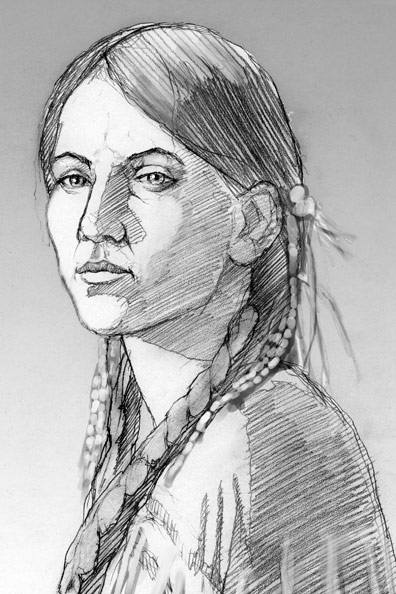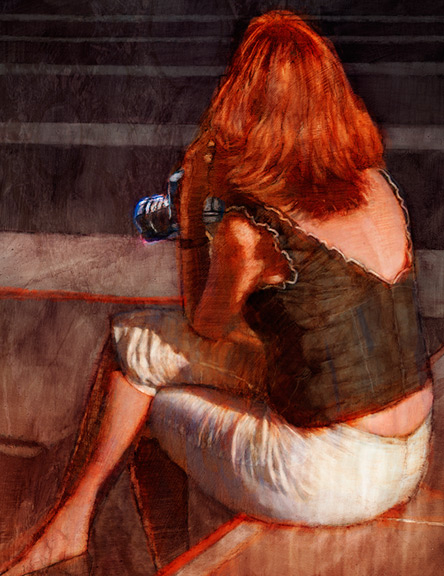
THE ASSIGNMENT
Create a thick, rich, painterly portfolio piece.
THE CHALLENGE
Create a multi-layered, beautiful illustration filled with immediacy and dimensionality, while also working as a flat abstraction.
GETTING STARTED
I dabble in photography. A nice byproduct of this is I have an abundance of source material when I want to play, a bit, with the paint.
One such photo session was with one of my favorite collaborators, Kendra Scott. We tend to create magical images, together. This particular session was a metamorphosis-themed concept, transitioning — visually and metaphorically — from a beautiful facade to raw vulnerability. You can see and read about this beautiful and emotional session, HERE and HERE.
One of my favorite images, from our experience, was this simple, yet elegant, back shot. The sensual forms and shapes would provide lots of opportunity to juxtapose bold strokes and textures, and see what might pan out, in a painting.

Using the paint in a sculptural way, I strove for economy of mark-making — a few marks to define the dimension of a shoulder blade or a mass of hair.
Red is one of my favorite colors to exploit, in a piece of art. It’s an automatic call-to-arms, visually, and emotionally. It lets the subconscious know there is a bundle of emotion, residing, within.
What better way to exploit red, than with green, its complement?
The photo has a much more subdued background, which works, for the photograph. But, for my illustration, there needed to be more for the eye to touch and experience. I decided it needed to remain a non-descript background, but still be filled with detail and depth, to add that richness and energy I was looking for. Layers of lines, shapes, dots, and negative space, all trigger the mind, in different ways, while still harmonizing within that single background space. The green colors are just subdued, enough, to not overpower the main statement of the red. That’s important for color balance.
THE FINAL ART
To further enhance a sense of beautiful, painterly mark-making that also happens to create a recognizable series of forms, a ragged black border seemed to be the perfect final touch. In addition to creating a frame, the border intersects and blends into the figure, separating the picture into three shapes (negative space to the left and right of the figure, and the figure, itself). In doing these things, the frame starts to trick the eye into choosing between a 3-dimensional form or a flattened abstraction. The mind is always trying to make choices as it attempts to make sense of the world.
This complex journey into a piece of art is what makes an eye want to come back and investigate. The question of what is real vs what is illusion is one of the most important questions art can pose to a viewer. It is just one aspect of art that makes it such an important part of the human experience.
My thanks to the amazing, Kendra, for creating beautiful images, with me, and helping to make this artwork, possible.

Allan Burch is an award-winning illustrator and portrait artist, providing solutions for editorial, book, advertising, and institutional projects.
•View more of his work»
•Sign-up for his newsletter»
•Purchase prints»





















